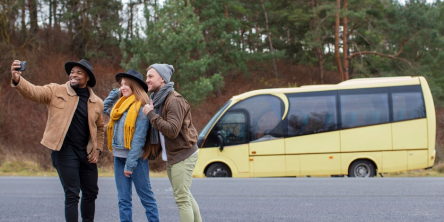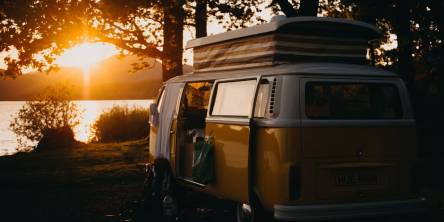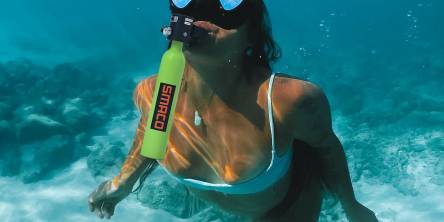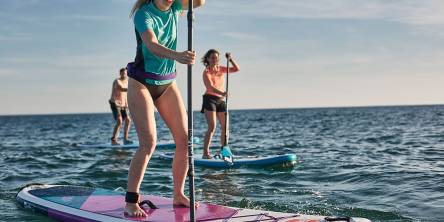Safety Tips during Mountaineering
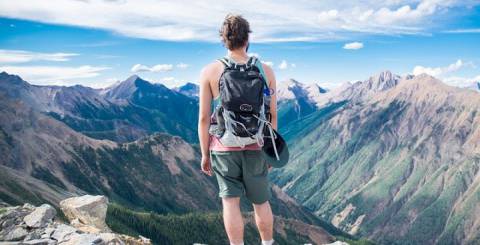
Safety is the most important thing to consider when it comes to mountain tours. The following basic rules should, therefore, be observed by everyone who is on the mountain. Depending on the tour, additional precautions such as professional preparation training may make sense.
Dangers when mountaineering
Many people who go mountaineering for the first time or only sporadically underestimate the dangers that can lurk in the mountains. This also applies to easy tours. These basic threats include, for example
- Bad, wrong or missing equipment
- Fear of heights, dizziness. On simple routes, these are usually not a problem, but if you choose the wrong tour, your risk of falling is very high.
- Too little drinking supplies, so that the water runs out on the way and dehydration arises.
- Lack of oxygen, which threatens above a certain height and can lead to headaches, nausea, shortness of breath or other symptoms of altitude sickness.
- Individual restrictions such as high blood pressure or being overweight, which can become a problem when mountaineering.
Depending on the tour, there may also be a risk of stone chips or a safety device is required, for which mountaineers need suitable equipment. It is therefore important to ask yourself before each tour which dangers could happen and to prepare or equip yourself accordingly.
Checklist: The most important to-dos before the mountain tour
A successful mountain tour, therefore, begins before the actual tour. It is important to plan your tours carefully, pack the right equipment and protect yourself against possible dangers. This is of course particularly important for beginners, but even experienced professionals should always deal with the question of what they could expect in an extreme situation on the mountain? The most important steps to prepare yourself for a tour like mount Kilimanjaro include the following:
Assess your options: First of all, your physical performance should be honestly questioned. Are there any health restrictions? It may make sense to first consult the doctor treating you or to test your condition during an extended walk. The more realistic mountaineers assess their skills, the lower the risks on the mountain. Because breaking off a mountain tour in the middle is not always possible.
Correct route selection: It is, therefore, advisable to select the routes so that there is a slow increase. So, if you have a hard time assessing your performance, start with an easy and shorter tour. Then, the level of difficulty can be slowly increased. Guide difficulty and mountain tour portals provide information about the difficulty of the route, but many other testimonials from mountaineers and the current tour conditions can also be found on the rest of the Internet and in social media. These provide significantly more information about how difficult the route is, what pitfalls await, etc.
Check the weather forecast: Before you can start, you should take a look at the weather forecast - not just a few days in advance, but also immediately before departure. It also doesn't hurt to deal with the weather a little bit to recognize any signs of a change of weather in good time during the tour. Then, it's time to go back or find a safe shelter as soon as possible ... depending on what there is still time for.
Basic packing list for mountaineering
If you go climbing, for example, you naturally need other utensils than mountaineers who make an easy tour to the next hut. Nevertheless, some basic things should always be in your luggage - regardless of the type and duration of the trip. This includes:
- Sun protection is essential on the mountain. A sunscreen with a medium to high sun protection factor and protection for the lips and head are therefore part of the basic equipment for every hiker. Sunglasses shouldn't be missing either, because on the mountain your eyes are less well-protected against the harmful UV radiation. However, since it is a complex and sensitive organ, short or long-term impairments of vision can occur without appropriate protection.
- Water is heavy, but must still be carried in sufficient quantities. That means several liters per person, depending on the temperature, route & Co. As a rule of thumb: Better too much than too little!
- As already mentioned, maps or GPS should not be missing.
- It is also advisable to take a change of clothes, at least for the upper body, to prevent the body from cooling down in the sweaty shirt during breaks.
- And last but not least, the first aid kit should not be missing. There should also be a way to get help in emergencies. The smartphone is therefore also a useful companion since it can also be found more quickly.
As already mentioned, additional equipment is often necessary depending on the individual case. If everything important has been packed, the preparation of the mountain tour is complete.
Similar Articles
Make your event stress-free with private charter buses! Discover 6 expert tips to ensure comfort, convenience, and unforgettable transportation for any occasion.
Discover California's hidden beaches, where pristine shores, breathtaking views, and serene escapes await. Explore these secret coastal gems toda
Create the ultimate campfire experience with a premium outdoor fire pit. Learn tips for a safe, cozy, and memorable setup that elevates your camping adventure.
Survival tools are pretty important in an emergency. They can make the difference between life and death. Still, more than having the correct tools is required. You have to be fast in locating them. Every two seconds counts in a crisis
Winter makes everything beautiful, but at the same time, it means that several dangers appear that may affect safety and buildings. Snow and ice if not treated properly result in hazardous situations that affect individuals and infrastructure such as sidewalks, driveways, and roads.
Aussies love sleeping under the stars and have done so since the first settlers arrived back in the 18th century; this huge landmass had to be explored and without tents, that would have been impossible. Back in those days, camping meant a basic tent and pretty much nothing else!
Wild camping in Scotland is a unique and unforgettable experience, offering campers the chance to immerse themselves in some of the country's most breathtaking landscapes. Scotland is the perfect place to set up camp, whether you're an experienced wild camper or a beginner looking to try something new.
An open-water certified scuba diver using a standard aluminum 60/80-cubic-foot tank and doing a dive at a depth of 40 feet may expect to remain under for around 45 to 60 minutes before ascending to the surface with a sufficient amount of air in the tank for a safety reserve.
PVC is used outside inflatable SUPs, and drop-stitch construction generates an air core inside the board. SUP come with a pump that can be used to inflate the board and a bag that can be used to store it when it is not used

